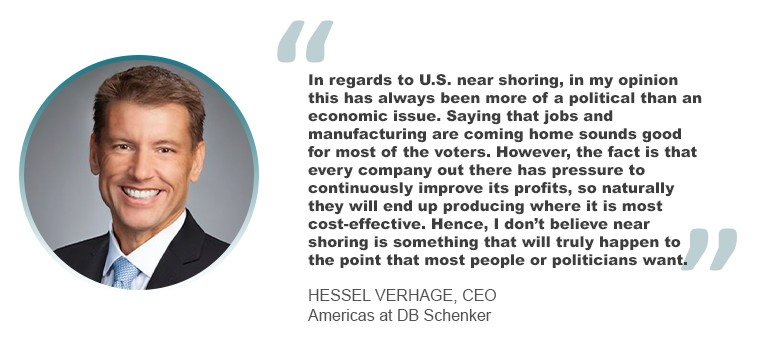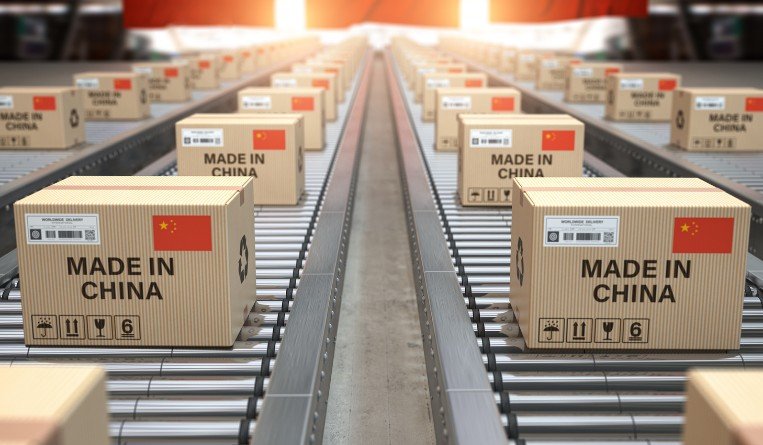In March, Intel announced plans to spend US$20 billion on two new manufacturing plants in Arizona and indicated that it intends to set up more factories in the U.S., Europe and other locations, as the company looks to ramp up in-house production.
The move marks an effort by the chip maker to recover lost ground, but coming in the aftermath of the U.S. government’s decision to secure supply chains for critical products, some observers view Intel’s new policy as a push to produce more in the U.S.
Prompted by a shortage of semiconductors that has disrupted car production, on February 24, U.S. president Joe Biden signed an executive order for a review of critical supply chains. This review targets four groups of critical goods – semiconductors, pharmaceuticals, critical minerals such as rare earths, and large-capacity batteries – as well as six sectors of industry.
Much attention has been directed at U.S. supply chains out of China, given the political tensions and plans of U.S. firms to shift sourcing to other origins. Last fall 16% of U.S. companies that were active in China at the time were considering adjusting their production and supply, according to PwC Research.
A strong reliance on China for sourcing is the second factor. Jennifer Bisceglie, CEO of supply chain risk management firm Interos, noted that in 2005 global reliance on Chinese exports stood at around 4%, but today it is between 17% and 20%. She called this a wake-up call, and much of the noise has come from the telecom industry, she remarked.
It is unclear what conclusions the U.S. government review will reach and whether or not this will lead to any action like tariffs, bans or investment incentives. At the end of the day, this is a business problem to be solved by businesses, Bisceglie commented.
“In regards to U.S. near shoring, in my opinion this has always been more of a political than an economic issue. Saying that jobs and manufacturing are coming home sounds good for most of the voters. However, the fact is that every company out there has pressure to continuously improve its profits, so naturally they will end up producing where it is most cost-effective. Hence, I don’t believe near shoring is something that will truly happen to the point that most people or politicians want,” said Hessel Verhage, CEO for the Americas at DB Schenker.

Companies are reassessing their supply chains as a result of the disruption they have experienced – primarily, but not exclusively as a result of the Covid-19 pandemic. They realize that the traditional model based on Six Sigma and low cost is brittle and does not offer the agility that is necessary to steer through more volatile conditions, Bisceglie remarked.
“They’re looking to pre-empt future disruptions and they’re doing that by having alternatives,” she said.
The point is not to cut off one source but to diversify and establish a broader base, she said.
In some cases, though, there are no alternatives, she noted, as certain products or materials are only available in certain locations.
Diversifying to a ‘China plus one’ or ‘China plus many’ sourcing strategy is challenging. Low production costs, skilled labour and well-developed infrastructure, supplemented by government support, have created efficiencies and capacity in China on a scale that countries like Vietnam or Indonesia cannot rival, a report published by Reuters last fall noted.
Along similar lines, a study by real estate giant CBRE cited one case where production costs in Vietnam were 30% lower than in China, but productivity was almost 20% lower. The authors concluded that a broad exodus of manufacturing capacity from China was unlikely, given the sophistication of the industry, the maturity of the supply chain and also China’s consumer market.
Emerging exporting economies in Asia are facing some constraints. One logistics executive remarked that the strains on capacity have affected flows of parts and raw material within Asia. If this were to continue, it could prompt some Chinse manufacturers that have set up production facilities in Vietnam to temporarily shift manufacturing back to China, where parts and raw materials are available, he said.
Transport bottlenecks and the ensuing rise in costs could ultimately reinforce interest in near shoring among North American and European firms that are currently sourcing from Asia.
“The X factor now is the cost of transportation from Asia which has more than doubled and in some cases tripled. I can see that if these types of rates continue that with some of the lower priced goods (toys, furniture etc.) it could possibly start to make some sense in the short term. In the long term, every company’s pressure on profits will determine where their goods are manufactured, which will still continue to be in Asia or other low-cost regions,” Verhage said.
At the moment, the cost of reconfiguring supply chains may be a strong deterrent for importers, but more likely they are simply too stretched to attempt such a juggling act in the present situation. US imports from China were up 23.8% year-on-year in February. From the rest of Asia they had risen by a more moderate 7.2%.
An end of the torrent of import flows from Asia is not in sight. In anticipation of continuing growth in online shopping and a rebound in in-store shopping, US retailers are projecting double-digit increases in imports through June. Many importers will simply be too busy to revamp their supply chains.
Ian Putzger



